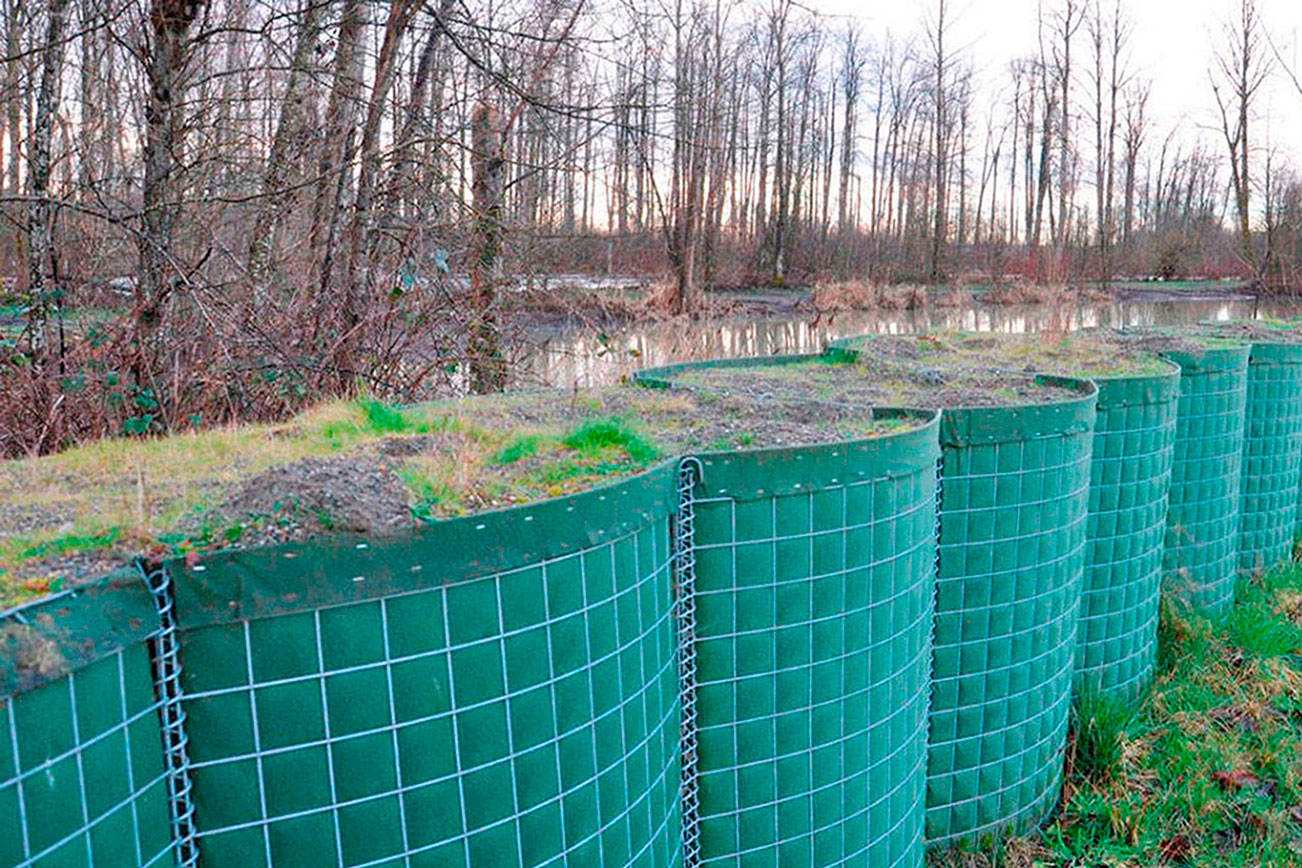For the ninth consecutive year, people who live and work in the City of Pacific along the White River will have additional flood protection this flood season, thanks to a temporary flood barrier that will soon be in place.
King County is scheduled to begin work Monday, Oct. 15 to close the gaps in the temporary barrier at Pacific Park that provides increased flood protection to Pacific.
The work is funded by the King County Flood Control District, and the barriers, known as HESCOs, are provided by the U.S. Army Corps of Engineers. Installing the HESCOs is expected to take three or four days, and residents can expect truck traffic, large equipment and crews working within construction areas.
Installing the temporary flood barrier requires the closure of Pacific Park along the White River. The park will remain closed to all public access until the seasonal flood threat has passed and the HESCO barrier has been removed in the spring.
The White River is notorious for the high sediment load it carries from its glacial source on Mount Rainier. The river segment alongside Pacific is particularly vulnerable to gravel deposition and rapidly changing conditions because of the natural drop in channel gradient through this area. As the channel fills with sediment, the chance the riverbank will overtop increases.
Work is underway to develop a permanent flood protection project on the right bank of the White River extending from the BNSF Railway embankment to Government Canal. The Flood Control District will be evaluating project alternatives in 2019.
The right bank project, combined with the Countyline Levee Setback Project that was completed in 2017, will reconnect more than 120 acres of floodplain to the river channel, giving the river room to fan out and deposit sediment.
Learn more about how they can prepare for flooding, including the use of sandbags to protect their property, by visiting kingcounty.gov/floodservices.


